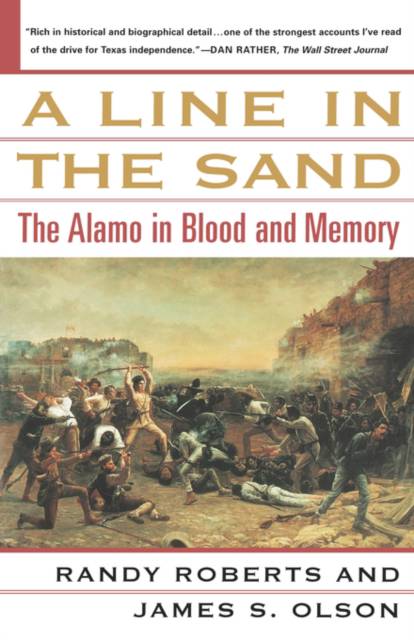
- Retrait gratuit dans votre magasin Club
- 7.000.000 titres dans notre catalogue
- Payer en toute sécurité
- Toujours un magasin près de chez vous
- Retrait gratuit dans votre magasin Club
- 7.000.0000 titres dans notre catalogue
- Payer en toute sécurité
- Toujours un magasin près de chez vous
A Line in the Sand
The Alamo in Blood and Memory
Randy Roberts, James S Olson
Livre broché | Anglais
36,95 €
+ 73 points
Description
Acclaimed historians Randy Roberts and James Olson use a wealth of archival sources--including the diary of José Enrique de la Peña--to retell the story of the Alamo for a new generation of Americans. In late February and early March of 1836, the Mexican Army--commanded by General Antonio López de Santa Anna--besieged a small force of Anglo and Tejano rebels at a mission known as the Alamo. The defenders faced a dire predicament, lacking vital information about the events unfolding beyond the mission's walls. They did not have much of an understanding of Santa Anna or of his government in Mexico City. They sent out contradictory messages, they received contradictory communications, they moved blindly and planned in the dark. And in the dark, early morning of March 6, they died. In that brief, confusing, and deadly encounter, one of America's most potent symbols was born. The story of the last stand at the Alamo grew from a Texas rallying cry, to a national slogan, to a phenomenon of popular culture and presidential politics. Yet it has been a hotly contested symbol from the first. Questions remain about what really happened. The full story of the Alamo--from the weeks and months that led up to the fateful encounter to the movies and speeches that continue to remember it today--is a quintessential story of America's past and a fascinating window into our collective memory. Historians Randy Roberts and James Olson explain what happened from the perspective of all parties, not just Anglo and Mexican soldiers, but also Tejano allies and bystanders. They delve anew into the mysteries of Crockett's final hours and Travis's famous rhetoric. Finally, they show how preservationists, television and movie producers, historians, and politicians have become the Alamo's major interpreters. Walt Disney, John Wayne, and scores of journalists and cultural critics have used the Alamo to contest the very meaning of America, and thereby helped us all to "remember the Alamo."
Spécifications
Parties prenantes
- Auteur(s) :
- Editeur:
Contenu
- Nombre de pages :
- 368
- Langue:
- Anglais
Caractéristiques
- EAN:
- 9780743212335
- Date de parution :
- 09-05-02
- Format:
- Livre broché
- Format numérique:
- Trade paperback (VS)
- Dimensions :
- 140 mm x 216 mm
- Poids :
- 485 g

Les avis
Nous publions uniquement les avis qui respectent les conditions requises. Consultez nos conditions pour les avis.






